If you’ve ever shopped for a helmet, chances are you’ve seen helmets equipped with MIPS safety technology, recognizable by the yellow lining and small yellow dot on the outside of the helmet. So What is MIPS helmet? How does this technology work and what are the pros and cons? Today’s article will contain the answer.
Contents
What is MIPS helmet?
MIPS stands for Multi-directional Impact Protection and is a safety feature built into the helmet. MIPS is a low-friction layer that allows 10-15mm relative movement between helmet and head in all directions to reduce rotational motion transmitted to the brain in the event of a collision. In 2020, there are about 729 helmets with MIPS on the market and 7.3 million have been sold. MIPS is used in many cycling helmets, but it is also used in riding helmets, construction helmets, and motorcycle helmets.
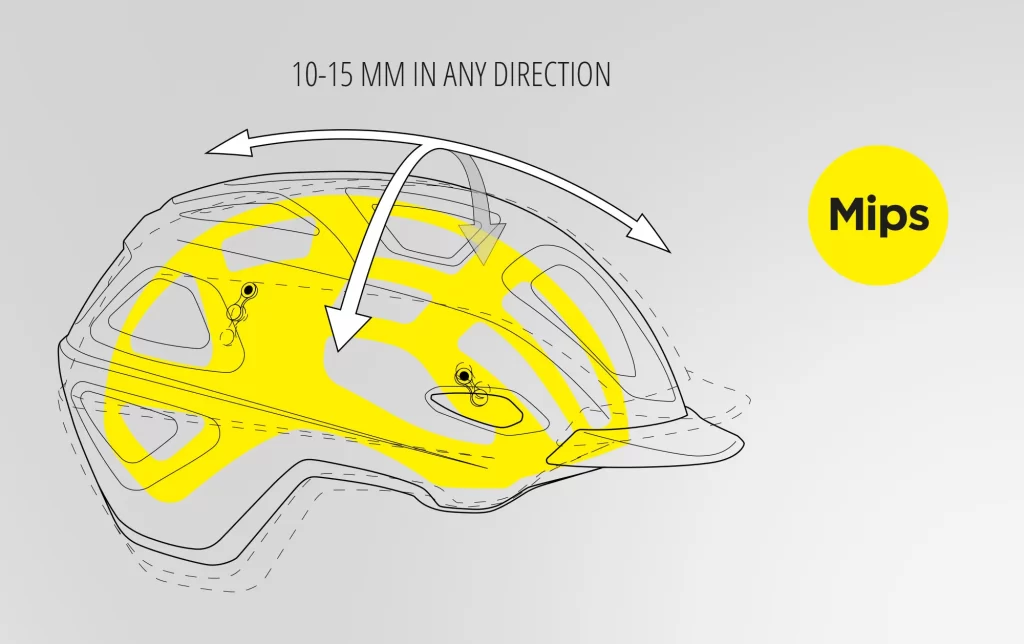
Origin of MIPS technology
Hans von Holst- a Swedish neurosurgeon is said to be the father of MIPS technology. von Holst and Peter Halldin, a researcher at the Royal Swedish Institute of Technology, and Svein Kleiven have found that the human brain is much better at handling linearity than oblique impacts that produce rotational distortion.
In sports such as cycling, skiing and horseback riding, where helmets are widely used, they found that most impacts generate rotational forces on the brain, sometimes leading to injury severe, even when the athlete wears a helmet. After years of research, von Holst and Halldin discovered that by placing two layers of low friction inside the helmet, they could induce relative motion between the helmet and the head which could reduce injuries rotating on the brain.
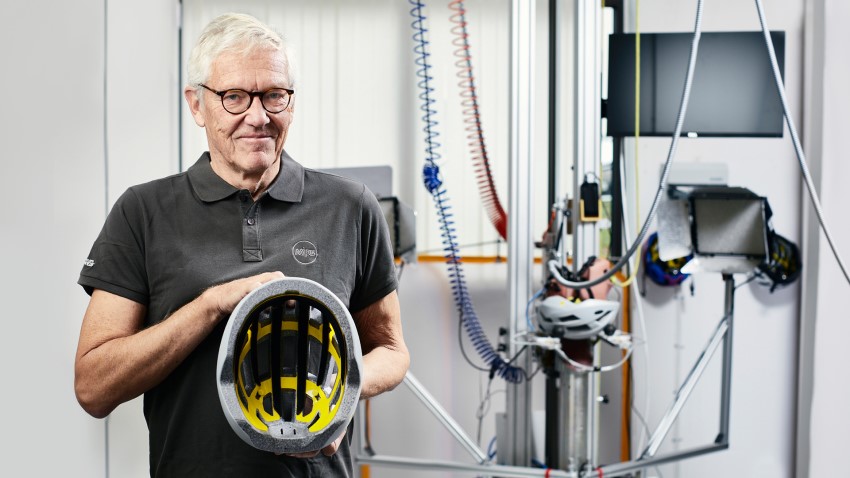
How does MIPS work?
MIPS works by using a movement layer to prevent rotational effects from traveling to your brain. At its core, MIPS technology mimics the protective structure of your own head. Between your skull and brain is a layer of cerebrospinal fluid, which allows the brain to slide inside the head, protecting it from rotational forces caused by oblique impacts.
Think of falls where the chances of you falling vertically to the ground and only coming into contact with a linear force are extremely low. When we fall to the ground, we have a forward horizontal velocity and a force acting on the ground, during that collision there will be a tangential force leading to the caps and heads rotating. Halldin says the MIPS has a lining that’s in contact with your head and will move independently of the outer shell upon impact. This allows some of the impact force to be absorbed before the polystyrene shell is impacted and reduces the amount of shock to the brain.
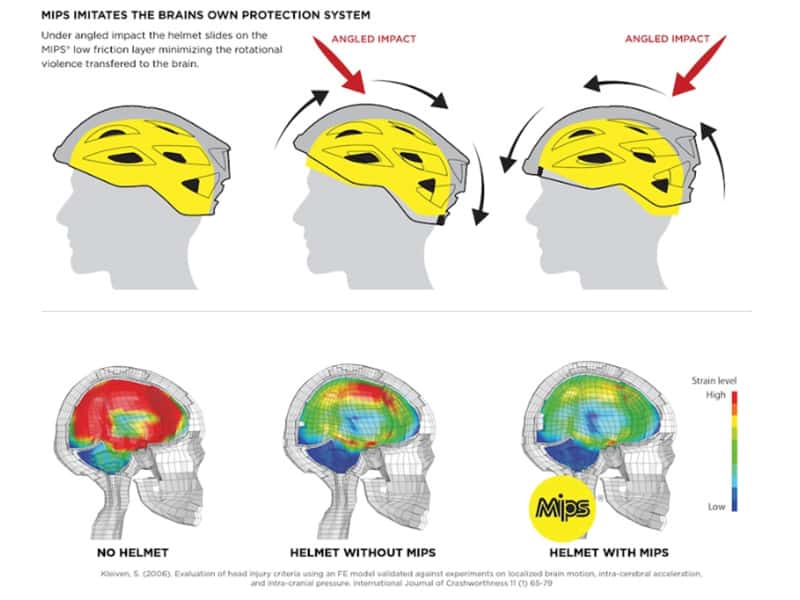
Pros
There is only one obvious advantage to helmets equipped with MIPS technology: the level of safety. If you are comparing two identical helmets and the only difference is the MIPS lining, then according to MIPS you should get a minimum increase in impact resistance of 10%.
Cons
On the downside, MIPS helmets are usually more expensive than the conventional types available in the market. Besides, it is also rated as less breathable because many of the vents are blocked by the sliding plane. It is also important to note that helmets equipped with MIPS can sometimes be tighter and smaller due to the extra layer of the plastic sliding plane between the helmet shell and its pads. Many helmet manufacturers are responding to differences in MIPS sizes, but if you’re considering switching to a MIPS-equipped helmet, we recommend trying on the size first.
Some high-quality MIPS bike helmets
Specialized S-Works Evade with Angi
Special S-Works Evade uses a combination of MIPS and Angi technologies for a high level of safety. Angi is a helmet-mounted device that pairs with a smartphone and will alert your phone if it detects forces involved in a collision. If you are safe, turn off the warning. Otherwise, the device sends a text message to a previously selected emergency contact. In addition to the safety feature, the Evade is a high-performance matching helmet.
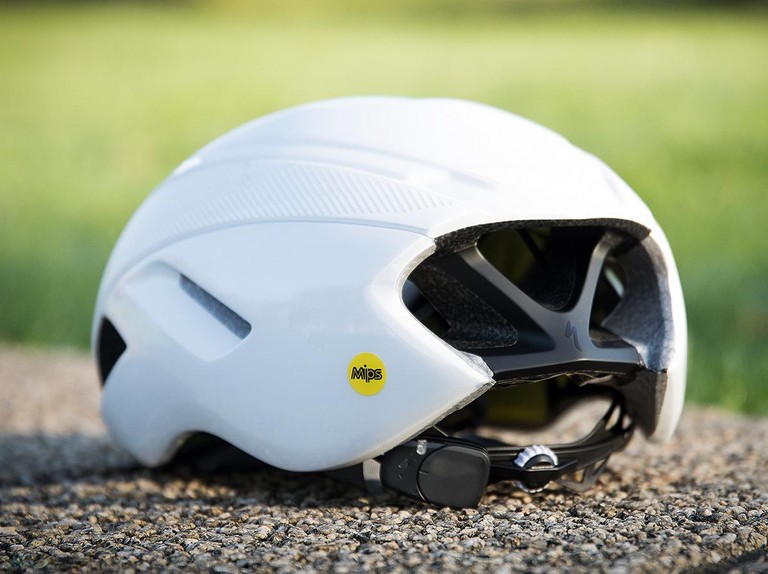
Smith Mainline
The Smith Mainline fits into the category of full-face helmets that are lightweight yet still suitable for many areas making the high price tag a bit more affordable. Smith provides helmets with pads of different thicknesses to get the helmet right. The helmet also provides good ventilation and is not suffocating when worn. With the safety features and robust design it offers, Mainline brings peace of mind to its users.
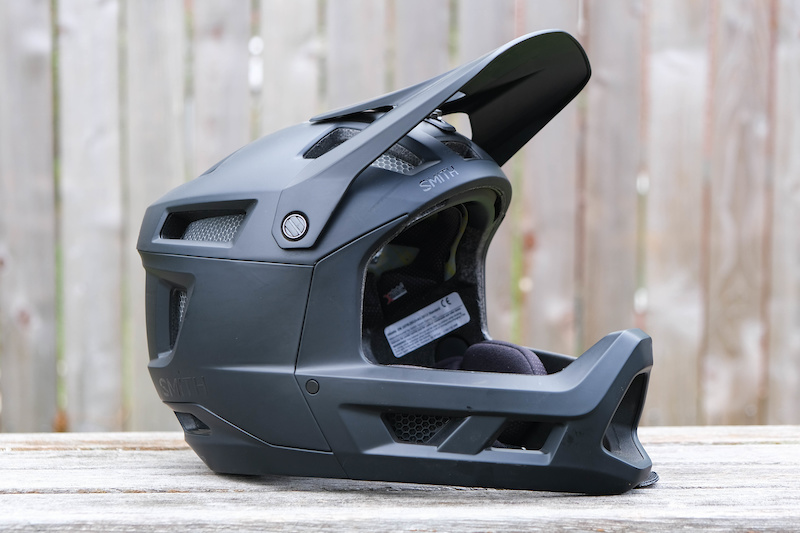
Giro Helios Spherical
Giro Helios is said to be a high-end design that is not intended for professionals and is focused on rough roads. The helmet looks good and is extremely comfortable with minimal padding providing ample padding and internal grooves to keep air flowing through your head. The hard shell keeps all the EPS foam covered, protecting it from any accidental bumps.
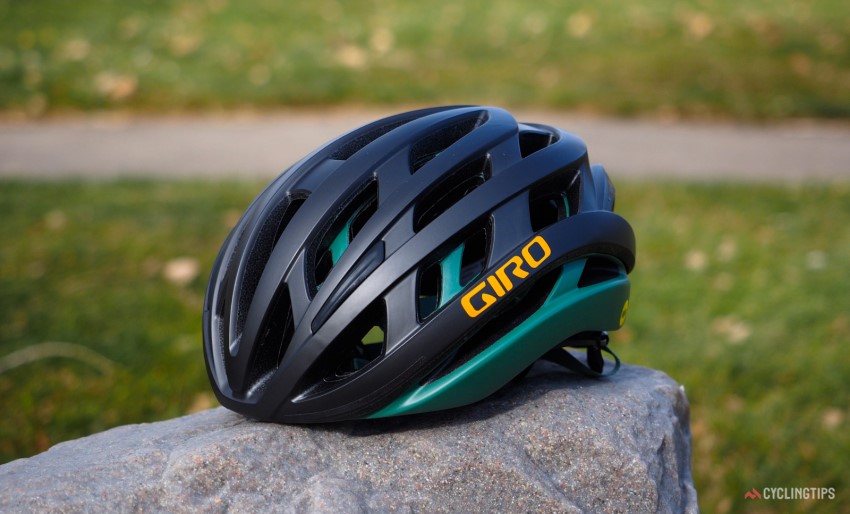
Conclusion
So what is MIPS helmet? MIPS is an additional safety technology that takes measures to protect you against swing impacts. While MIPS technology usually tends to add to the cost of helmets, it’s not a huge price increase and there are a number of helmets with MIPS for under £100. So, modern helmets, whether equipped with MIPS or not, are rigorously tested and passed high-speed, high-impact crash testing and put on the consumer market.
Read more:
